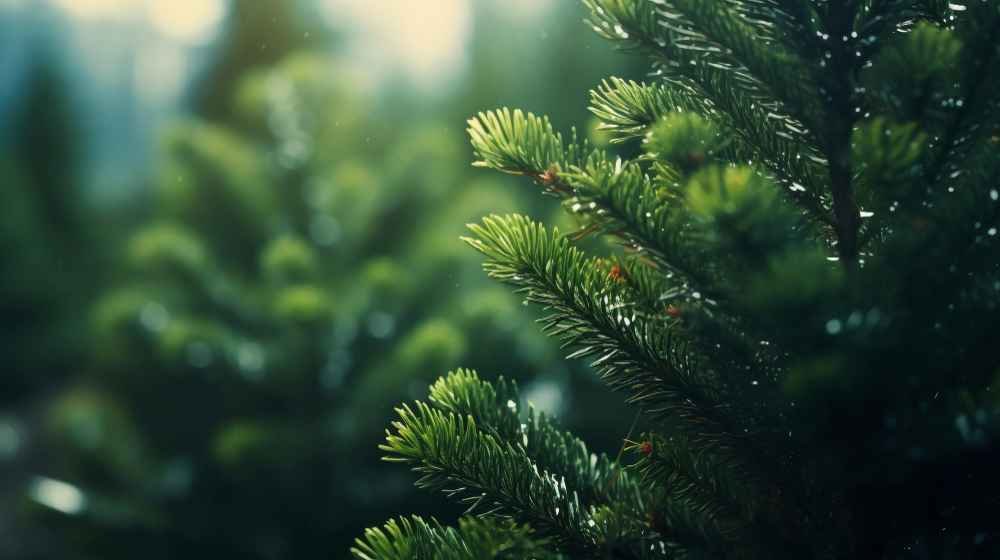Evergreen trees are a staple in gardens and landscapes, providing year-round beauty and structure. Unlike deciduous trees that shed their leaves in the fall, evergreens retain their foliage throughout the seasons, offering a constant source of color and life. This article will explore the many benefits of evergreen trees, highlight popular species, and provide tips for integrating them into your outdoor space.
The Beauty and Benefits of Evergreen Trees
- Year-Round Aesthetic Appeal:
- Evergreens maintain their lush green foliage all year long, providing visual interest in every season. In winter, when many plants are bare, evergreens add depth and color to the landscape.
- Privacy and Windbreaks:
- These trees are excellent for creating natural barriers. Planting a row of evergreens can provide privacy from neighbors, block wind, and reduce noise pollution, making your outdoor space more enjoyable.
- Wildlife Habitat:
- Evergreens provide shelter and food for various wildlife species, including birds, squirrels, and insects. Their dense foliage offers nesting sites and protection from predators.
- Soil Erosion Control:
- The extensive root systems of evergreen trees help stabilize soil, preventing erosion on slopes and along waterways. This makes them ideal for planting in areas prone to runoff.
- Low Maintenance:
- Generally, evergreens require less maintenance than deciduous trees. They are often drought-resistant once established and typically do not need to be pruned as frequently.
Popular Evergreen Tree Species
- Eastern White Pine (Pinus strobus):
- Description: Known for its long, soft needles and tall, straight trunk, the Eastern white pine is a fast-growing tree. It can reach heights of 50 to 80 feet and is often used in reforestation efforts.
- Uses: This tree is popular for timber production and as an ornamental tree in landscapes.
- Norway Spruce (Picea abies):
- Description: With its drooping branches and dark green needles, the Norway spruce is a classic choice for holiday decorations and landscaping. It can grow up to 100 feet tall.
- Uses: Often used as a windbreak or privacy screen, this species is also a favorite for Christmas tree farms.
- Douglas Fir (Pseudotsuga menziesii):
- Description: Recognized for its conical shape and dense foliage, the Douglas fir is a versatile evergreen that can grow up to 80 to 100 feet tall. Its soft needles have a pleasant citrus scent when crushed.
- Uses: Commonly planted for timber and as a Christmas tree, it also serves as an excellent landscape specimen.
- Red Cedar (Juniperus virginiana):
- Description: This tree features aromatic, scale-like leaves and can grow to 40 feet tall. The red cedar is known for its durability and resistance to decay.
- Uses: Often used in fencing, furniture, and as an ornamental tree, red cedar is also beneficial for attracting wildlife.
- Italian Cypress (Cupressus sempervirens):
- Description: Known for its tall, narrow silhouette, the Italian cypress adds a Mediterranean flair to gardens. It can reach heights of 50 to 70 feet, making it ideal for vertical accents.
- Uses: Commonly used in formal landscapes and as a statement tree in driveways or entrances.
Incorporating Evergreen Trees into Your Landscape
- Designing with Evergreens:
- Consider mixing different evergreen species to create visual interest. Combine various heights, textures, and colors to enhance your landscape design.
- Spacing and Placement:
- When planting evergreens, ensure adequate spacing to allow for growth. Consider the mature size of the tree to avoid overcrowding.
- Seasonal Considerations:
- While evergreens provide year-round greenery, consider incorporating flowering plants or deciduous trees for seasonal color and variety.
- Soil and Watering Needs:
- Most evergreens prefer well-drained soil. Ensure proper watering, especially during the establishment phase, while also considering the tree’s drought tolerance once matured.
- Mulching and Maintenance:
- Apply mulch around the base of evergreen trees to conserve moisture and suppress weeds. Regularly check for pests and diseases to maintain healthy trees.
Conclusion
Evergreen trees offer timeless beauty, unparalleled benefits, and practical uses in landscaping. Their ability to provide year-round greenery and habitat for wildlife makes them a cherished part of many outdoor spaces. By selecting the right species and incorporating them thoughtfully into your landscape, you can enjoy the charm and elegance that evergreens bring throughout the seasons. Embrace the enduring appeal of evergreen trees and let them enhance your garden for years to come!
For more, visit our website, Homthreads







